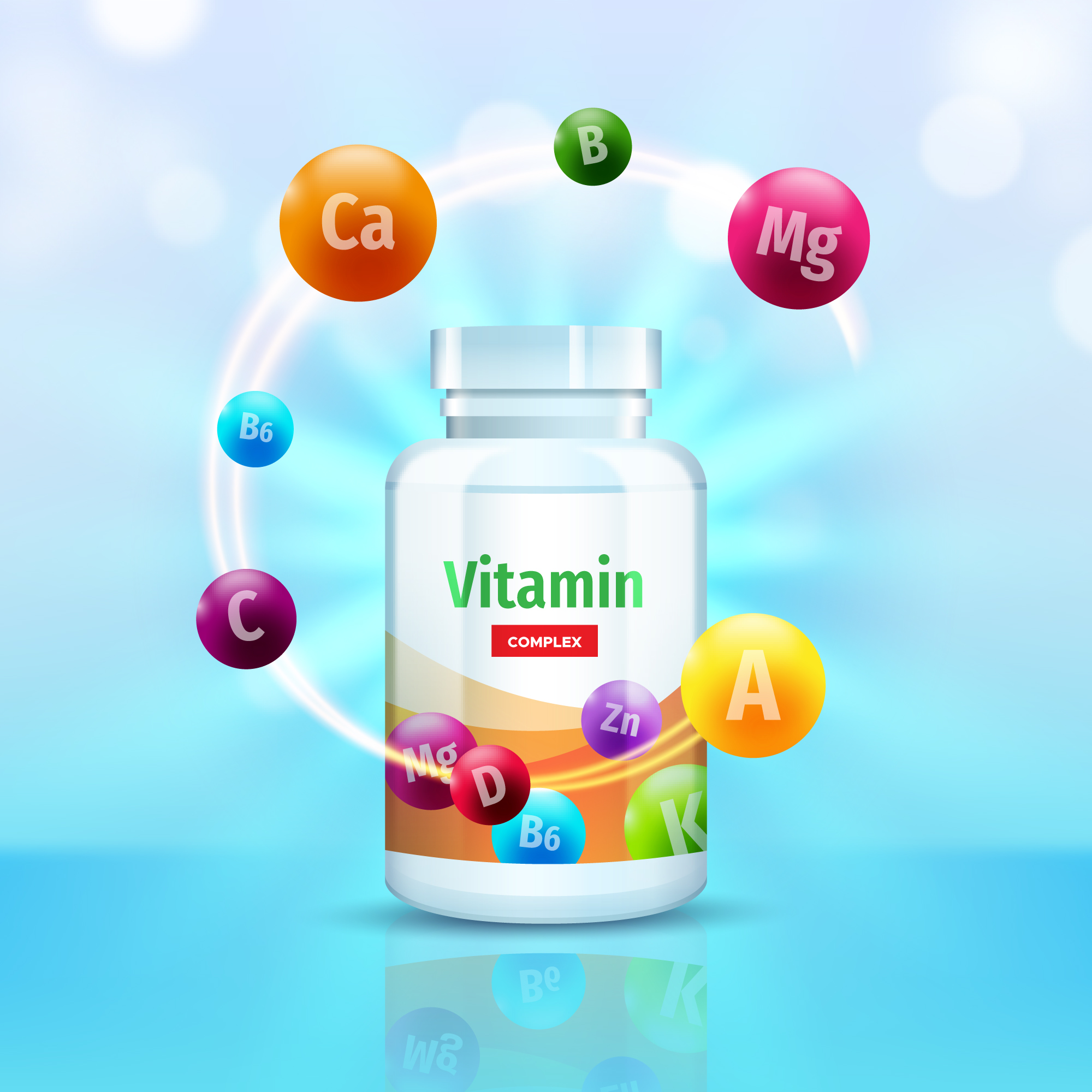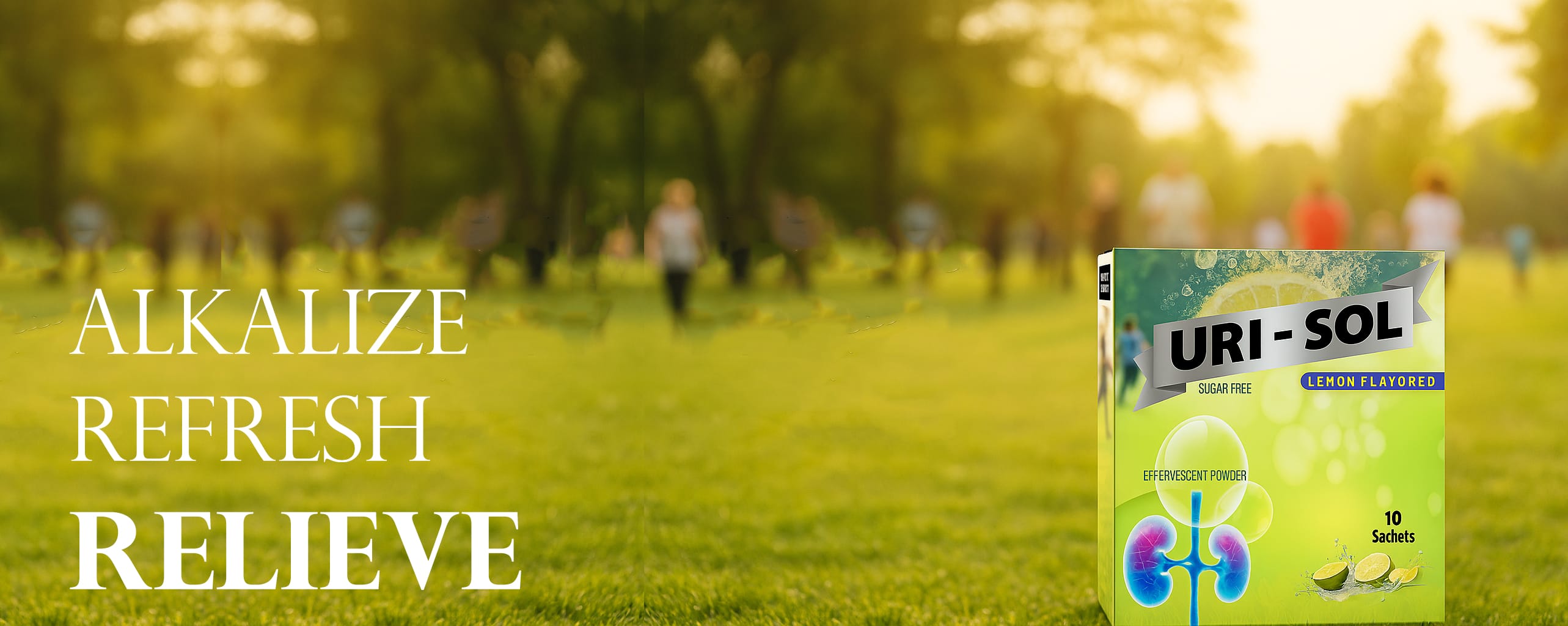URI‑SOL
URI‑SOL — An evidence‑based urinary alkalinizer in an effervescent sachet
Product / composition (per 4 g sachet)
-
Sodium bicarbonate — 1.76 g
-
Tartaric acid — 890 mg
-
Citric acid (anhydrous) — 720 mg
-
Sodium citrate (anhydrous) — 630 mg
Summary
URI‑SOL is an effervescent urinary alkalinizer designed to raise urinary pH and deliver citrate anions in an immediately palatable aqueous solution. The carefully balanced blend of sodium bicarbonate, sodium citrate, and organic acids (citric + tartaric) produces fast effervescence and a buffered alkaline solution that combines immediate and sustained alkalinizing action — an attractive pharmacotechnical and clinical profile for management and prevention of acid urine‑related conditions (for example, uric‑acid nephrolithiasis and selected aciduric states). The formulation leverages the complementary chemistry of bicarbonate and citrate with excipient acids to optimize dissolution, taste, and stability. PMCMayo Clinic
Why these four ingredients work together — mechanism & synergy
-
Immediate alkalinization (Sodium bicarbonate).
Sodium bicarbonate is a fast‑acting source of systemic and urinary alkali: once dissolved and absorbed it supplies bicarbonate ions that increase blood and urine bicarbonate, thereby raising urinary pH. This rapid effect is useful when a quick rise in urinary pH is desired. PubMedauanews.net -
Sustained buffering and citrate delivery (Sodium citrate + citric acid).
Sodium citrate acts as a metabolizable alkali: after absorption it is converted to bicarbonate in the liver, providing a more sustained alkalinizing effect and delivering citrate anions to urine. Urinary citrate chelates ionized calcium and reduces calcium stone supersaturation; citrate also directly inhibits crystal growth and aggregation. Together, citrate and bicarbonate give both rapid (bicarbonate) and prolonged (citrate) urinary alkalinization — a clinically useful synergy especially for uric acid stone dissolution and prevention. PMCAUA -
Controlled effervescence, solubility and palatability (Citric acid + Tartaric acid).
Citric acid and tartaric acid are intentionally combined with bicarbonate to generate effervescence (CO₂) upon dissolution. Effervescence accelerates disintegration and dissolution, improves mouthfeel and taste, masks alkalinity, and increases patient acceptance — a practical advantage for adherence. Tartaric acid is commonly used alongside citric acid to tune the effervescent reaction rate and improve physical stability of the powder. The acid–bicarbonate interaction also yields sodium citrate in situ, reinforcing citrate availability. ScienceDirectjddtonline.info -
Net clinical benefit from the combination.
Clinical and review literature supports that citrate mixtures (alkali citrate formulations) and bicarbonate both raise urinary pH and can dissolve or prevent uric acid stones; some studies show citrate mixtures may have advantages in reducing gout symptoms and hematuria compared with bicarbonate alone. The URI‑SOL combination therefore couples the immediate alkali effect of sodium bicarbonate with the proven stone‑preventive and crystal‑inhibiting properties of citrate — while using effervescence chemistry to improve tolerability and patient adherence. PMCMDPI
Indications & clinical rationale (evidence highlights)
-
Uric acid stone disease: Uric‑acid stones are highly pH‑dependent and respond to urine alkalinization. Raising urine pH to around 6.0 increases uric‑acid solubility and can dissolve existing stones or prevent recurrence; oral alkali therapy is a first‑line medical option. URI‑SOL’s combined bicarbonate/citrate approach supports both immediate and sustained pH control. AUAMDPI
-
General urinary alkalinization: For conditions requiring temporary urine pH elevation (e.g., certain drug toxicities or aciduria states), the product’s dual‑mechanism alkalinizing effect is pharmacologically appropriate. For specific dosing, contraindications and patient selection follow local guidelines and clinician judgement. Mayo Clinic
Pharmaceutical quality and formulation strengths
-
Effervescent sachet format delivers rapid dissolution, predictable dispersion, and improved palatability — all important for patient adherence and consistent dosing. Modern effervescent technology (citric/tartaric acid + bicarbonate) is well documented and widely used in over‑the‑counter and prescription products. PMCRSC Publishing
-
Ingredient rationale: The molar interplay between citric/tartaric acids and sodium bicarbonate creates in‑situ sodium citrate while producing CO₂ — a controlled chemical pathway that supports both drug performance and consumer acceptability. jddtonline.info
About the product quality & marketing
URI‑SOL is presented to the market by GLOBAL MEDICAL OFFERS (Marketing Authorization Holder). According to the product dossier provided by the manufacturer, URI‑SOL is manufactured in India under facilities that hold GMP certification and the product is supplied with all required regulatory documentation and certificates of analysis. These manufacturing and regulatory assurances support product traceability and quality control — important elements when recommending an alkali/citrate therapy for chronic stone prevention or episodic urinary alkalinization. (Note: the statements about MAH, manufacturing location and GMP status are reproduced from the manufacturer/MAH documentation.)
Safety & practical points
-
Monitor urine pH and serum electrolytes in long‑term use (risk of metabolic alkalosis and sodium load), and tailor therapy to renal function, comorbidities, and concurrent drugs. Avoid indiscriminate self‑medication in patients with severe renal impairment, uncontrolled hypertension or congestive heart failure because of sodium content. Follow local prescribing information. Mayo Clinic
Conclusion
URI‑SOL combines sodium bicarbonate (rapid alkali) with sodium citrate/citric acid (sustained alkalinization and citrate delivery) and tartaric acid (formulation control) in an effervescent sachet that is designed to be both clinically effective and patient‑friendly. This synergy — rapid pH change, sustained citrate availability, improved palatability and good pharmaceutical stability — makes URI‑SOL a well‑rationalized option where urinary alkalinization is indicated. Clinical decisions should always match individual patient needs and follow national guidelines and the local product label.
Key references
-
Citrate mixture vs sodium bicarbonate — randomized/clinical comparisons and benefits. PMC
-
Medical and dietary therapy for kidney stone prevention (mechanisms of citrate). PMC
-
AUA guideline — urine pH targets & alkali therapy for uric acid stones. AUA
-
Effervescent technology and citric/tartaric/bicarbonate chemistry (formulation rationale). jddtonline.infoPMC
-
Systematic review — oral dissolution therapy of uric acid stones. MDPI












